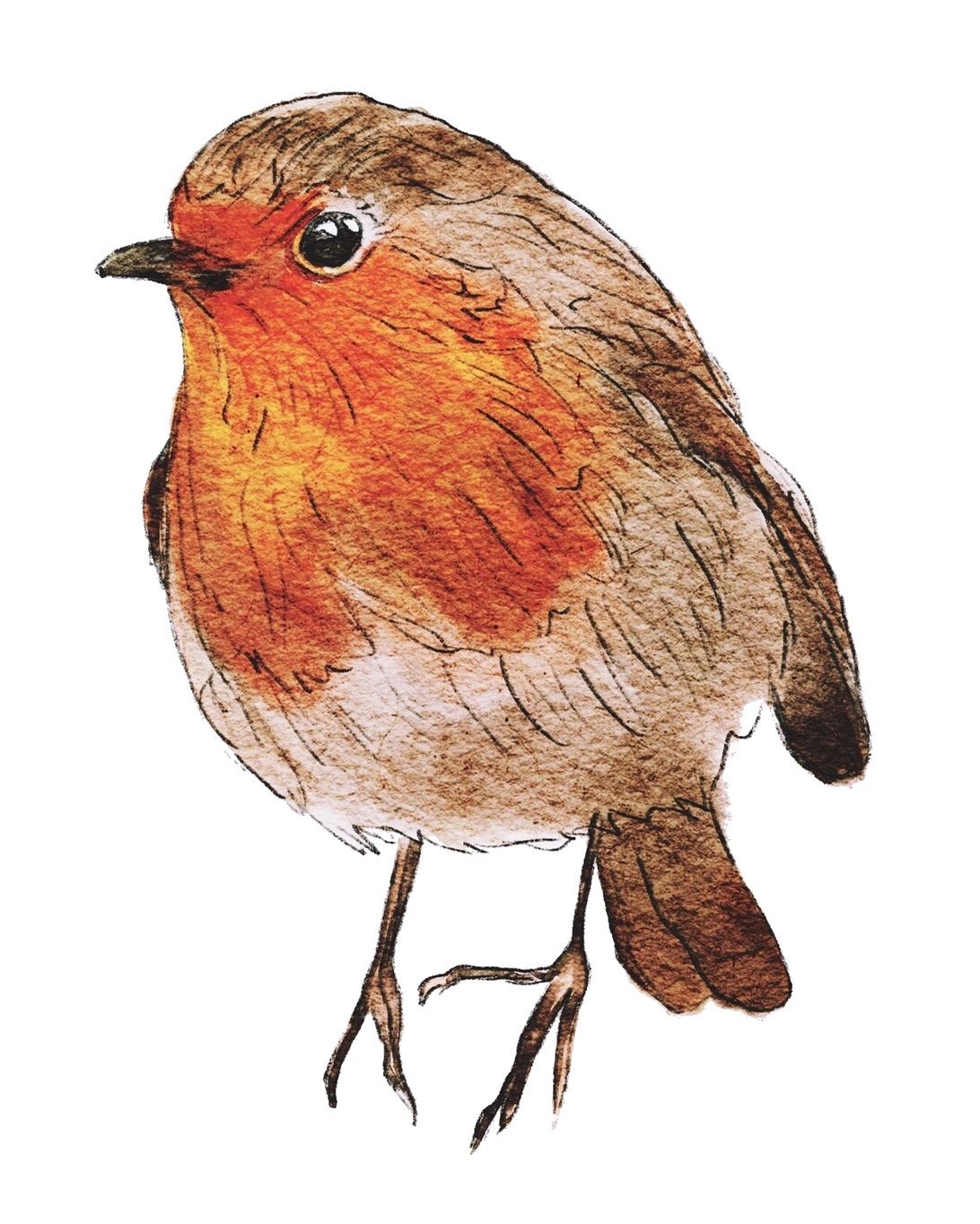The European robin (‘robin redbreast’), scientific name Erithacus rubecula, is a friendly garden bird with a characteristic red chest and neck. There are currently an estimated 6.7 million pairs of robins living wild in the UK as of 2021.
Many people wonder where robins seem to disappear off to in the winter, and whether it is the same ones that seem to come back in the spring. The short answer is that they never really leave during the winter, and tend to stick to their local area. So, yes, you will likely see the same robins each year!
Some robins migrate, but most of them don’t. However, their behaviour does change in the winter, which is why they are less commonly seen during this time. Most European robins never leave an area, although they will be seen less frequently in the winter due to colder temperatures and fewer hours of daylight. They can be spotted in the UK in every month of the year, and don’t tend to stray far from their local area.
Because robins are very territorial, they generally stick to the same area, whether that’s a local park, an area of woodland or your garden! Robins, once they have reached adulthood, typically live for between two and five years, so it is very possible that you are seeing the same robin return to your garden a few years in a row.
Robins are between 12cm and 13cm in length, just slightly smaller than a sparrow or dunnock. Their wingspan is typically 20cm, and they weigh between 16g and 22g. They are petite, round birds, and the male and female are similar in size.
The European robin has a characteristic red chest, neck and face, a feature which is present in both male and female robins. The colour is vibrant, and often makes robins easily recognisable. The orange chest is lined by blue-grey streaks, and the upper part of the robin’s body is brown.
They have white bellies, a brown tail and black-brown legs. Robins have small black bills that are slightly pointed, and have black, round eyes. Young robins are brown and speckly, and don’t develop their red chest until their first malt at two to three months old.
Robins typically live on a diet of worms, seeds, fruits, insects and other invertebrates such as spiders. Due to the fact that they are fairly confident when interacting with humans, the European robin will happily eat scraps from the garden, too. They’ll eat cake crumbs, biscuit crumbs, and even crumbs of cheese! They also aren’t shy when feeding from a bird feeder, and will eat most types of bird feed, including meal worms.
Robins live in both rural and urban environments, preferring to live in hedgerows, gardens and woodland. In the UK, the European robin tends to prefer parks and garden, whereas in the rest of Northern Europe they prefer woodland.
The European robin was introduced in North America and New Zealand in the late 19th century, but these introduction attempts were unsuccessful.
Robins lay two or three clutches of four to six eggs each year, and begin breeding season in late March. They tend to stay with the same mating partner throughout one year, but may change partners in between breeding seasons. They build nests made primarily of moss and dead leaves.
Robins are incredibly territorial birds, and this is partially to blame for their high mortality rate. Despite being friendly towards humans, they fiercely attack each other if there is an infringement on their territory.
When a robin lays a clutch of eggs, they will incubate them for up to two weeks before they hatch. Once they have hatched, the baby robins are called ‘nestlings’. Nestlings have no feathers, and are entirely dependent on adult robins for food and shelter.
Parent robins will regurgitate partially digested insects and seeds into the mouths of nestlings for upwards of one week, before they can begin to eat broken up insects on their own. Once a nestling is between 9 and 16 days old, it will transition into a ‘fledgling’ and will begin the process of leaving the nest.
Fledglings have all or most of their feathers, but do not yet have the characteristic orange chest. Fledglings will leave the nest over a period of 10 to 15 days. During this time, the robins are likely to still be dependent on the male adult robin for food, until their attention is turned to a new clutch of nestlings.
The majority of robins die before they reach one year old, but those that live past this typically live for two to five years. The oldest known wild European robin lived for 11 years!
The robin is an insectivorous passerine bird. This means that it eats insects, and is a ‘perching bird’. It belongs to the chat subfamily of the Old World flycatcher family.
Chat birds (also known as chat-thrushes) are a group of birds that were formally identified as thrushes until DNA evidence revealed them to be closer to members of the Old Worldflycatcher family. The Old World flycatcher family is a large family of perching birds that live in the Europe, Africa and Asia. There are 324 species in the family, and the majority of them are insectivores like the European robin.

